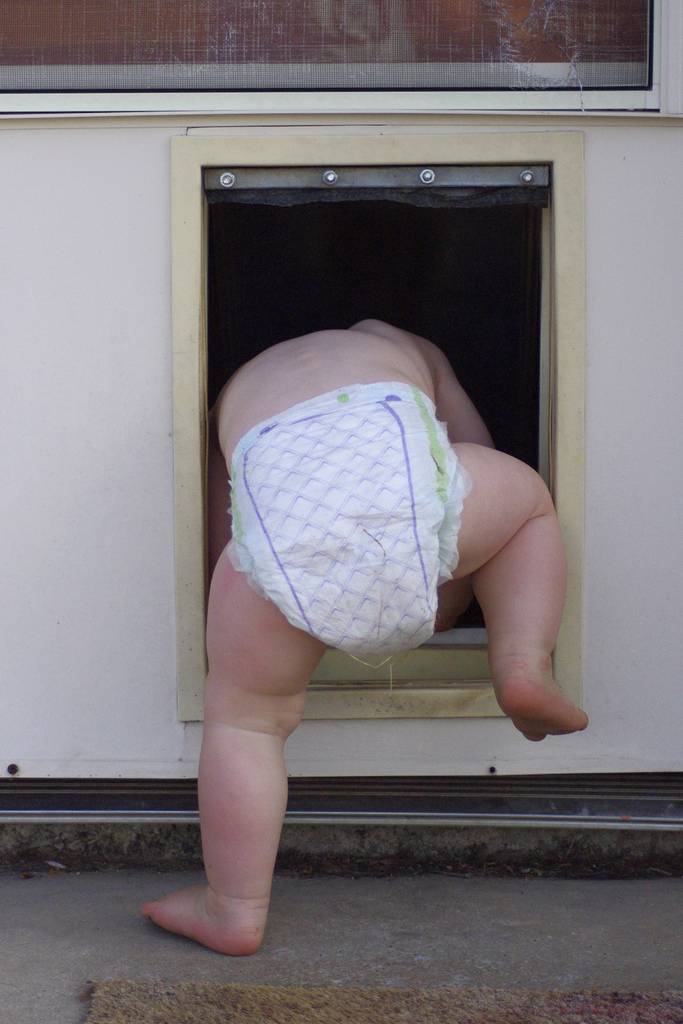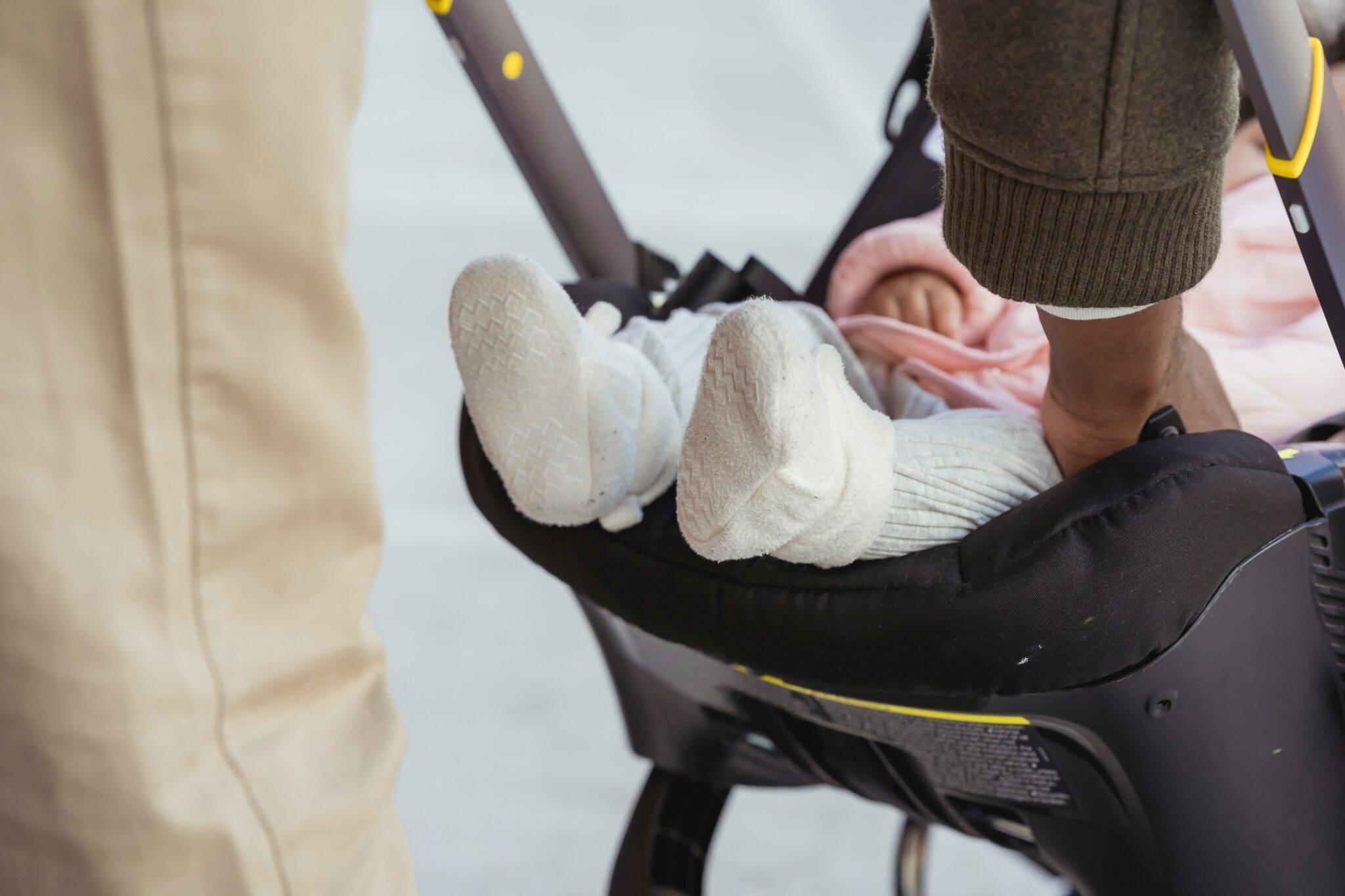Bathtime is one of the most cherished routines for many parents and their babies. The splashes of water, the giggles, and the bonding during these moments are precious. However, once the splashing is over and your baby is out of the water, the focus shifts to keeping baby warm and comfortable.
Babies are sensitive to temperature changes, and after being immersed in warm water, they’re prone to rapid heat loss. Babies lose heat much more quickly than adults, making it crucial to know how to keep your little one cozy after a bath. Keeping your baby warm after a bath is essential for their comfort, well-being, and health.
This guide will walk you through everything you need to know to ensure your baby warm and snug after bath time.
Why Keeping Your Baby Warm After a Bath Matters
Babies aren’t just miniature adults. Their bodies are still developing, making them more vulnerable to environmental changes, including temperature fluctuations. Their small bodies can’t regulate temperature as efficiently as adults. After a bath, a baby’s skin cools down quickly, leading to discomfort and potential health issues.
Understanding the importance of keeping your baby warm helps you take the necessary steps to protect them, ensuring their health and happiness.
The Science Behind Heat Loss in Babies
Babies have a large surface area relative to their body weight. This means they lose heat more quickly, especially when wet. Also, babies have lower body fat, which is essential for insulation. Without proper insulation, they can’t regulate their body temperature as effectively as adults.
This vulnerability to heat loss is the rationale for taking precautionary steps after bath time to protect babies from potential health issues related to heat loss.
Potential Health Risks of Not Keeping Your Baby Warm
Failing to keep your baby warm after a bath leads to several health concerns. These risks underscore the importance of taking appropriate measures to maintain your baby’s body temperature.

- Hypothermia: This occurs when the body temperature drops below the normal range. In infants, hypothermia can set in rapidly if they are exposed to cold conditions for too long. Symptoms of hypothermia in babies include shivering, cold skin, lethargy, and difficulty breathing. In severe cases, hypothermia is life-threatening.
- Increased Susceptibility to Illness: When a baby’s body is cold, the immune system may not function optimally, making them susceptible to infections. The common cold, respiratory infection, and other illnesses easily take hold if a baby is frequently exposed to cold environments after a bath.
- Skin Irritations and Rashes: Prolonged exposure to moisture in skin folds, mixed with cool air, irritates the skin. Babies have delicate skin prone to rashes, especially if not dried properly. Keep your baby warm and dry to prevent these issues.
- General Discomfort and Fussiness: A cold baby is an unhappy baby. If your baby feels cold, they become fussy and difficult to soothe. Ensure baby warm after a bath, contributing to their comfort and happiness.
Preparing for Bath: Setting the Stage for Baby Warmth
The process of keeping your baby warm starts before the bath even begins. Preparation is key to a smooth and warm transition from bathing to being dressed and comfortable. Set up the bathing area and have the things needed ready, so you can focus on your baby rather than scrambling for supplies.
1. Warm the Bathing Area
The first step is to ensure the room where you bathe your baby is warm. Ideally, the room temperature should be around 75°F (24°C). If the room feels cool to you, it’s likely too cold for your baby. Consider a space heater to warm up the bathroom or nursery before starting the bath.
Always place the heater in a safe location away from water and out of your baby’s reach.
2. Gather All Necessary Bath Supplies
Have everything within arm’s reach. Focus on your baby without leaving them unattended to get something you forgot. Here’s a list of items you should have ready:
- A soft, warm towel (a hooded towel is highly recommended)
- A fresh diaper
- Baby lotion or oil (preferably warm)

- Warm clothes or a onesie
- A blanket or swaddle
- A baby brush or comb (optional)
3. Pre-Warm Towels and Clothes
One of the best ways to keep your baby warm after a bath is to use pre-warmed towels and clothes. Warm these items by placing them in a dryer for a few minutes before the bath or use a towel warmer if you have one. This small step makes a difference in maintaining your baby’s body temperature when first wrapped up.
During the Bath: Keeping Your Baby Comfortable
While we focus on keeping your baby warm after the bath, what you do during the bath is important. Properly managing the bath ensures your baby remains comfortable and warm.
1. Use Warm Water at the Right Temperature
The water temperature should be warm but not too hot. The ideal bath water temperature to keep baby warm is between 98°F and 100°F (36.5°C and 37.8°C). Always test the water with your elbow or a bath thermometer to ensure it’s at the right temperature. The water should feel warm but not hot enough to cause discomfort.
2. Keep Bath Time Short
Babies don’t need long baths. Shorter baths are better because they prevent your baby from getting too cold. Aim for a bath time of about 5 to 10 minutes. This is sufficient to clean your baby without exposing them to prolonged wetness and potential heat loss. Keep baby warm.
3. Pour Warm Water Over Your Baby
Keep a small cup of warm water handy to pour over your baby’s body periodically. This helps maintain their body temperature and keeps them comfortable. Be gentle and avoid splashing water near their face, which startles them.
After the Bath: Steps to Keep Your Baby Warm
Once the bath is over, the most critical phase of keeping your baby warm begins. The steps you take immediately after the bath make all the difference in ensuring your baby remains cozy and content.
1. Gently Lift Your Baby Out of the Bath
When bathing is over, gently lift your baby out of the bath, supporting their head and neck. Hold them close to your body as you move them to the drying area. The warmth of your body helps keep them from getting too cold during this transition.
2. Wrap Your Baby in a Warm Towel
When your baby is out of the water, wrap them in a pre-warmed towel. The sooner you wrap your baby, the less heat they will lose. A hooded towel is useful as it helps keep their head warm, reducing overall heat loss.
3. Pat Your Baby Dry Thoroughly
Pat your baby dry with the towel, starting with their head and moving down their body. Dry all areas, especially the skinfolds, where moisture hides. This includes the neck, armpits, behind the ears, and between the toes. Leaving moisture in these areas leads to skin irritation.
4. Pay Attention to the Hair
If your baby has hair, dry it as much as possible with a towel. Hair retains moisture and cools down quickly, so dry it thoroughly. Use a hooded towel to gently rub their scalp or a baby hairbrush to help dry it more effectively.
Dressing Your Baby After the Bath
Dressing your baby quickly and efficiently after a bath is essential to keeping them warm. Here’s how you can do it without delay:
- Apply Baby Lotion or Oil: Before dressing your baby, apply baby lotion or oil. This helps keep their skin soft and hydrated, and it also provides a slight barrier against the cold. Warm the lotion or oil before applying it to your baby’s skin.
- Put on a Fresh Diaper Immediately: After drying and moisturizing your baby, put on a fresh diaper at once. This step ensures your baby is ready for dressing without the risk of accidents before they’re fully clothed.
- Dress Your Baby in Warm Layers: Choose soft, warm clothing for your baby. A cotton onesie or footed pajamas are excellent choices. If the room is cool, add an extra layer, such as a light sweater or a sleep sack. The key is to keep your baby warm without making them too hot.
- Use a Swaddle or Blanket: If your baby enjoys being swaddled, wrap them in a soft, warm blanket after dressing. Swaddling keeps them warm, helps them feel secure, and promotes better sleep. For older babies who may not like being swaddled, a cozy blanket covers them while being held or rocked.
Extra Tips for Keeping Your Baby Warm and Cozy
- Use a Hooded Towel: This is one of the best investments for keeping your baby warm. The hood covers your baby’s head, where significant body heat can be lost. Immediately cover the baby’s head after the bath to maintain their body temperature.
- Hold Your Baby Close: After dressing up, hold your baby close to your body—the most natural way to keep them warm. Skin-to-skin contact is effective in maintaining your baby’s body heat. This is also a great time for bonding, as the warmth and closeness soothe your baby and make them feel secure.
- Consider Using a Heating Pad: If you have a heating pad, use it to warm up your baby’s crib or changing table before laying them down. Turn off the heating pad and remove it before placing your baby on the surface. Always check the temperature with your hand first to ensure it’s warm but not hot.
- Monitor the Room Temperature: Keeping the room temperature at a comfortable level is crucial after the bath. A nursery thermometer monitors the temperature. Avoid placing your baby near drafts or windows where the temperature is cooler.
Signs That Your Baby Is Warm Enough
Ensure your baby is warm but not too hot. Overheating is concerning, just like too cold. Here are some signs that your baby is at a comfortable temperature.
- Warm Extremities: Check your baby’s hands, feet, and the back of their neck. If these areas feel warm to the touch, your baby is likely at a comfortable temperature.
- Calm and Content Behavior: A warm and comfortable baby is calm and content. If your baby is fussy, crying, or seems uncomfortable, it may be too cold or too hot. Adjust their clothing or environment accordingly.
- Regular Breathing: Observe your baby’s breathing. If they’re breathing steadily and normally, it’s a good indication that they’re comfortable. Rapid or shallow breathing indicates that your baby is too cold or overheated.
Avoiding Common Mistakes: What Not to Do
While keeping your baby warm is essential, avoid certain mistakes that lead to discomfort or health issues.
- Don’t Overdress Your Baby: While layering is important for warmth, overdressing causes overheating. If your baby is sweating or overly warm, remove a layer of clothing. The goal is to keep your baby comfortably warm, not hot.
- Don’t Use Hot Water: Always use warm, not hot, water for your baby’s bath. Hot water is dangerous and can burn your baby’s sensitive skin. Test the temperature with your elbow or a bath thermometer to ensure it’s safe.
- Don’t Leave Your Baby Wet: Never leave your baby wet after a bath. Always dry them thoroughly and quickly to prevent them from getting chilled. Moisture left on the skin leads to rashes and discomfort.
Make Bath Time a Warm and Comforting Experience
Bathtime should be a relaxing and enjoyable experience for you and your baby. Follow the steps and tips presented in this guide so your baby stays warm and cozy after every bath. Preparation is key. Have everything ready before the bath, keep dry, and dress your baby efficiently after the bath to keep them comfortable and content.
A warm baby is a happy baby, and with these guidelines, ensure your little one is safe, snug, and satisfied after bath time. For more helpful tips and guidance on caring for your baby, visit Omegapediatrics.com and explore the following topics to enhance your parenting journey:






